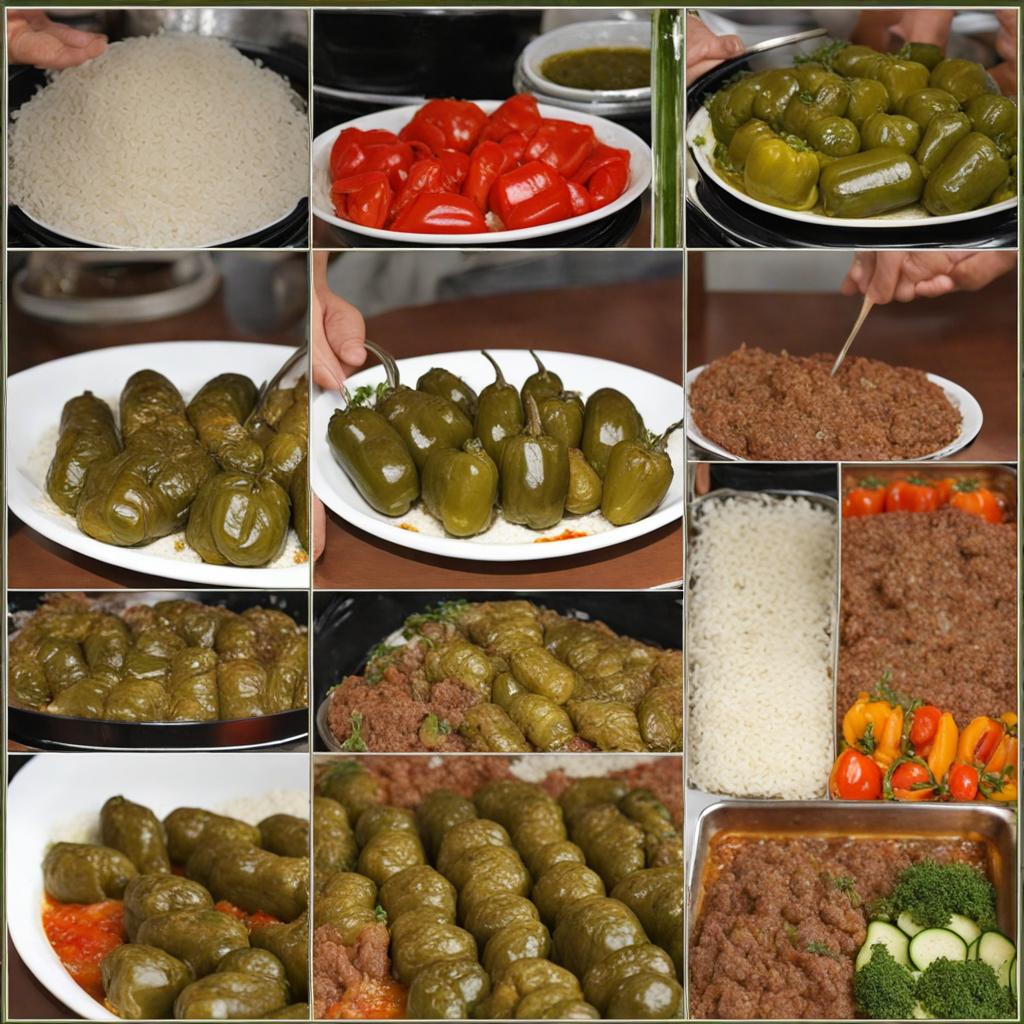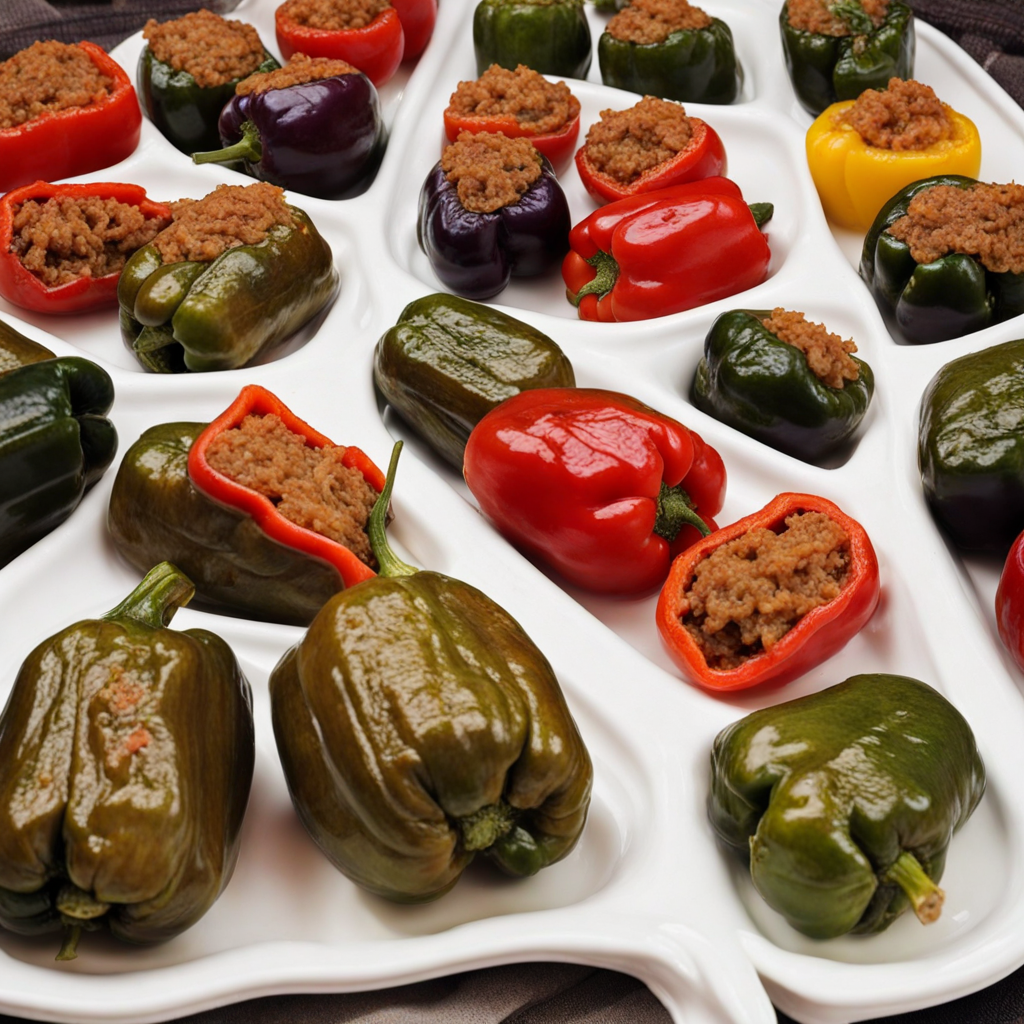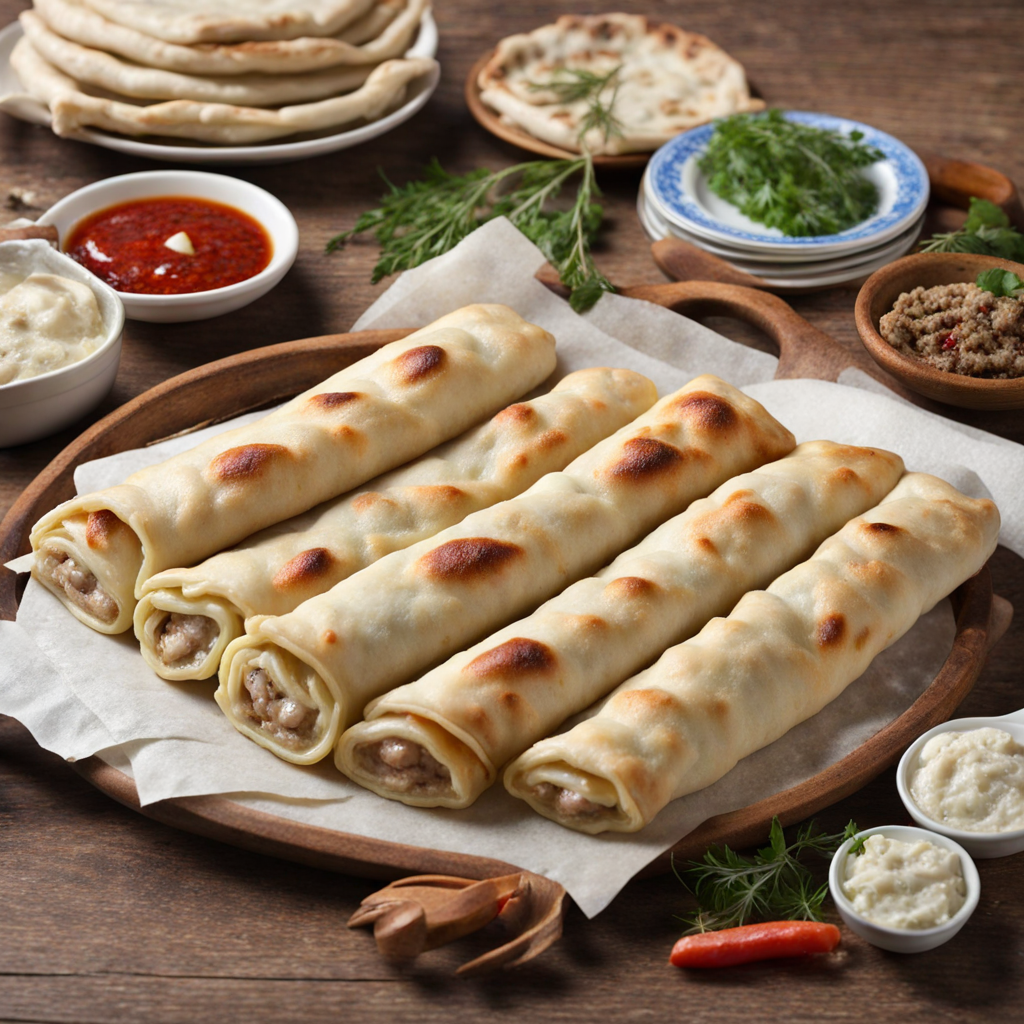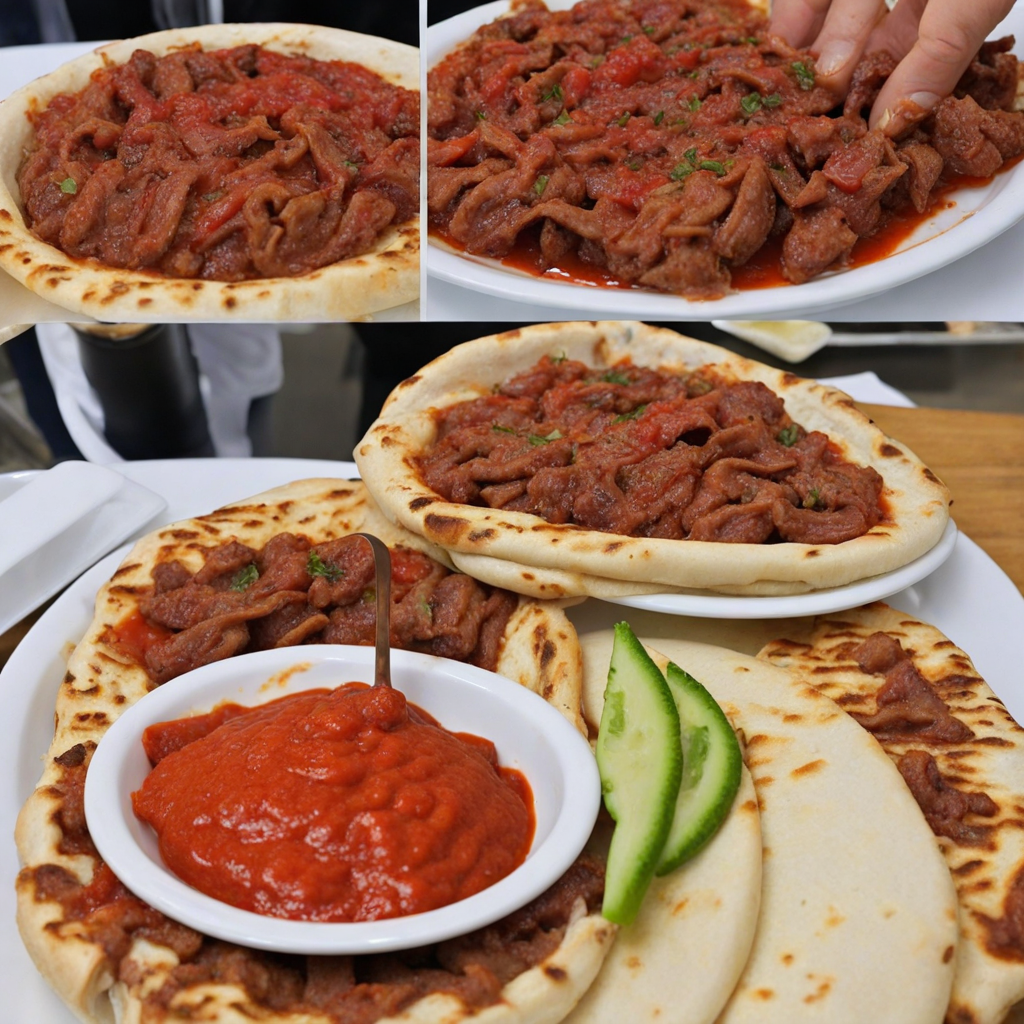Dolma
Dolma is a traditional Turkish dish that beautifully showcases the country's rich culinary heritage. At its core, dolma consists of vegetables, most commonly grape leaves, stuffed with a savory mixture of rice, herbs, and spices. The rice is often combined with finely chopped onions, tomatoes, and sometimes minced meat, such as lamb or beef, creating a delightful medley of flavors and textures. The stuffing is seasoned with aromatic spices like dill, mint, and allspice, which infuse the dish with a fragrant aroma that enchants the senses. Each bite of dolma is a harmonious blend of the tender grape leaf and the flavorful filling, making it a beloved staple in Turkish cuisine.
How It Became This Dish
The Rich Tapestry of Dolma: A Culinary Journey through Turkey Dolma, a dish that embodies the essence of Mediterranean cuisine, has long been a staple in Turkish culinary tradition. Originating from the Ottoman Empire, dolma refers to vegetables, typically grape leaves, bell peppers, or zucchinis, stuffed with a mixture of rice, meat, spices, and herbs. This dish is not merely food; it represents a cultural symbiosis that has evolved over centuries, reflecting the history, customs, and social practices of the regions it has touched. #### Origins: A Culinary Tradition The word "dolma" comes from the Turkish verb "dolmak," meaning "to be stuffed." While the precise origins of dolma are difficult to pinpoint, it is widely believed that the practice of stuffing vegetables began in the Middle East and spread to the Mediterranean as various cultures encountered one another through trade, conquests, and cultural exchange. The earliest known examples of stuffed vegetables can be traced back to ancient civilizations such as the Greeks and Romans. The concept of using vegetables as vessels for flavor and sustenance can be found in ancient texts, where recipes for stuffed grape leaves and other vegetables appear. The Greeks, for instance, prepared a dish called "dolmadakia," which closely resembles modern dolma and includes a filling of rice, pine nuts, and herbs. As the Ottoman Empire expanded, it assimilated various culinary influences from its diverse territories, including the Balkans, the Middle East, and North Africa. Each region contributed its unique flavors and methods, shaping dolma into a versatile dish that could be adapted according to local tastes and ingredients. For instance, in the Levant, dolma often incorporates lamb and various spices, while in Turkey, the use of rice and aromatic herbs is favored. #### Cultural Significance: A Symbol of Hospitality In Turkish culture, dolma is more than a dish; it is a symbol of hospitality and community. Traditionally, dolma is prepared for gatherings, celebrations, and family meals, making it a staple at weddings, holidays, and special occasions. The act of making dolma often becomes a communal activity, where family members come together to prepare the filling, stuff the leaves, and cook the dish. This collaborative effort fosters a sense of togetherness and reinforces familial bonds. Moreover, dolma also holds a significant place in Turkish identity. It is often served alongside other traditional dishes, such as yogurt and pilaf, creating a well-rounded meal that showcases the variety of flavors and textures characteristic of Turkish cuisine. The dish's presentation—neatly arranged and often garnished with lemon slices or fresh herbs—reflects the importance of aesthetics in Turkish dining culture. In a broader context, dolma represents the confluence of cultures within Turkey, reflecting the nation’s rich history as a crossroads of civilizations. Each region of Turkey boasts its own interpretation of dolma, showcasing local ingredients and culinary influences. For instance, in southeastern Turkey, the use of spices and meat is more pronounced, while in the Aegean region, olive oil and fresh herbs take center stage, resulting in a lighter, vegetarian version. #### Evolution Over Time: A Culinary Adaptation As Turkey modernized in the 20th century, the culinary landscape also transformed, but dolma remained a beloved dish that adapted to contemporary tastes and lifestyles. The advent of globalization and the increased availability of ingredients have allowed for a wider variety of fillings and cooking methods. While traditional dolma uses rice and minced meat, modern variations may include quinoa, bulgur, or even lentils, catering to health-conscious consumers and dietary restrictions. Furthermore, as Turkish cuisine has gained international recognition, dolma has become a staple in restaurants around the world, often reinterpreted to suit different palates. In some cases, chefs experiment with fusion flavors, incorporating ingredients like cream cheese or sun-dried tomatoes, which, while straying from tradition, highlight the dish's versatility and adaptability. The rise of vegetarianism and veganism has also influenced dolma's evolution. Many contemporary recipes now focus on plant-based fillings, utilizing ingredients such as chickpeas, nuts, and a variety of vegetables. This shift not only caters to dietary preferences but also honors the tradition of dolma as a dish that can be enjoyed by all. #### The Contemporary Scene: A Global Delight In recent years, dolma has gained a prominent place in international cuisine, celebrated in food festivals and featured in cookbooks. It has become a symbol of Mediterranean diet and healthful eating, often highlighted for its use of fresh ingredients and wholesome flavors. Social media has also played a crucial role in popularizing dolma, as food enthusiasts share their adaptations and experiences with the dish, creating a global community around it. Today, dolma is not only a cherished dish within Turkey but also a celebrated culinary treasure worldwide. From upscale restaurants to home kitchens, dolma continues to bring people together, inviting them to share in the rich cultural heritage that it represents. #### Conclusion: A Dish Beyond Borders Dolma stands as a testament to the power of food as a cultural connector, transcending borders, languages, and traditions. Its journey from ancient civilizations to modern kitchens illustrates how culinary practices evolve while retaining their essence. As generations continue to prepare and enjoy dolma, it serves as a delicious reminder of the interconnectedness of cultures and the enduring nature of shared culinary heritage. In every bite, one can taste the history, the hospitality, and the love that is woven into this remarkable dish—making dolma not just food, but a story told through flavors.
You may like
Discover local flavors from Turkey







